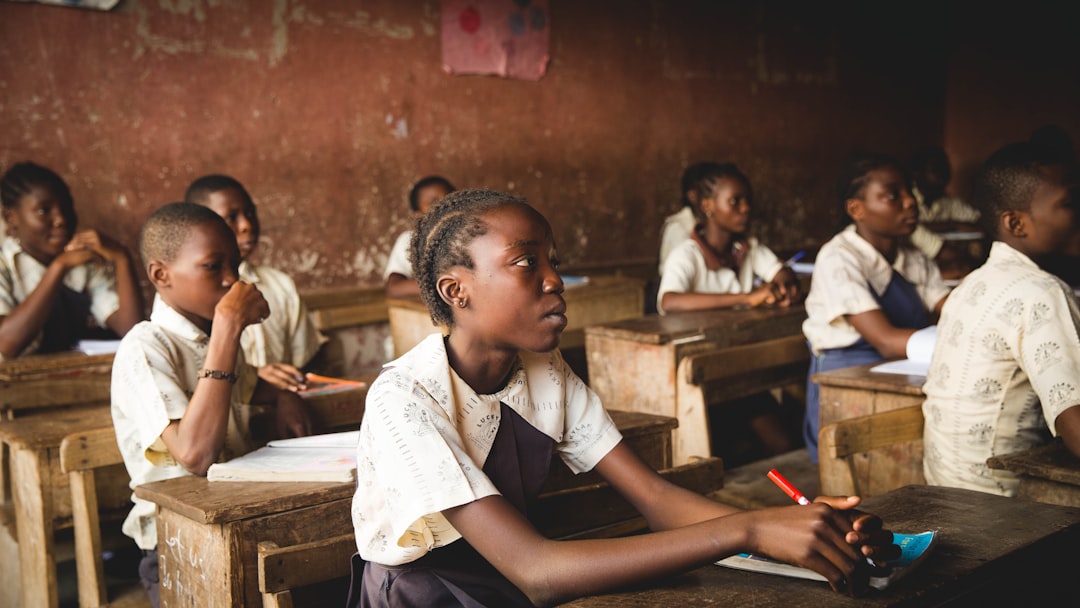This article explores the potential benefits of the recent shift towards blended learning in the Hindi education system. It examines the concept of blended learning and delves into its role, advantages, and its future implications in the realm of Hindi education.
Table of Contents
The Upside of Recent Blended Learning
Key Takeaways Shortly
- Blended learning is a combination of traditional and online learning methods. It is gaining popularity in the Hindi education system due to its flexible and personalized approach.
- The recent shift towards blended learning in Hindi education has been influenced by factors like the pandemic and advancements in technology.
- Blended learning offers several advantages for Hindi learners such as flexible learning schedules, personalized instruction, and improved student engagement.
- Case studies have shown that blended learning can significantly improve learning outcomes in Hindi education.
- The future of blended learning in Hindi education looks promising, with potential for further developments and some challenges to overcome.
The world of education, my friends, is changing very quickly. If you take a little peek at it, you’ll see a new trend. A trend that’s blooming like a flower in spring. It’s called ‘blended learning in Hindi’. Now, you might be wondering, what is this all about? Well, it’s a mix of traditional classroom teaching and online learning.
Sounds interesting, right? Just like a bowl of your favorite mixed fruit salad. But why are we talking about it now? It’s because of the recent events. Yes, you guessed it right! The global pandemic has made us rethink our ways of learning and teaching.
So, here we are, exploring this new way of learning. In the upcoming sections, we’ll dive more into this. We’ll see how it’s creating waves in the educational landscape. So, sit back, grab a cup of coffee, and let’s embark on this journey together.
Ah! Just a quick note before we move on. This isn’t just about education. It’s about adapting to change. It’s about making the most of the situation. So, even if you’re not a student or a teacher, stick around. You might find something useful, you know.
The Advantages of Blended Learning in Hindi
Blended learning, the combination of online and traditional face-to-face learning, is proving to be a big hit, especially in Hindi. It’s a versatile approach that could be just the thing we need right now.
The beauty of this system is that it, well, blends the best of both worlds. The students can, you know, get the personal touch of traditional teaching and also the flexibility of online learning. This approach can be a real game changer in a language like Hindi where pronunciation and dialects play a crucial role.
“Blended learning is more than just a trend, it’s the way forward. It combines the best of both worlds to provide the best possible learning experience.”
– An unnamed education expert
In Hindi, the blended learning approach can come in handy. It lets students learn at their own pace. If you find a word hard to pronounce or a grammar rule hard to understand, you can simply pause or rewind the online lesson. It’s as simple as that.
Blended learning can help make Hindi learning more engaging and interactive. With online tools and resources, students can explore different dialects, accents, and nuances of Hindi. They can even interact with native speakers and get real-time feedback.
So, blended learning in Hindi? It’s a big yes from us! It’s not just about learning, but about enjoying the process. And that’s what education should be about, right?
The Intersection of Traditional and Digital Learning
Blended learning in Hindi is, well, quite an interesting concept. It’s just like making a yummy smoothie. You take the good old traditional learning, you know the one with books and chalkboards, and you blend it with the new age digital learning. It’s all about finding that sweet, sweet balance.
Now, let’s dive a bit deeper into this, shall we? We’re not talking about replacing one with the other. No siree! We’re talking about making them work together, like a well-oiled machine. Imagine it like this – you’re learning about the intricate details of the Hindi language using both textbooks and, let’s say, educational apps. You get the best of both worlds.
However, it’s not always as easy as pie. There are, of course, some bumps along the way. Like, how do you ensure that the digital side doesn’t overpower the traditional? Or, how do you make sure that the students are, well, actually learning and not just playing games on their devices?
But, when done right, blended learning in Hindi can be a game changer. It has the potential to make learning more interactive, more engaging and, dare I say, more fun. And who doesn’t want to have fun while learning, right?
The Power of Tech in Blended Learning
Blended learning is, well you know, a mix of traditional face-to-face learning and online learning. But how does technology come into play? Well, it’s simple. The online part of, you know, blended learning heavily relies on technology. In fact, it’s kind of like the pillar that supports it.
The advancement of technology has played a big role in the rise of, you know, blended learning in Hindi. It’s fascinating really. A report from KPMG and Google highlights that online education in India will see approximately 8x growth by 2021. Why, you ask? It’s because of our tech evolution!
With the recent surge in tech development, platforms for online learning have, you know, become more interactive and user-friendly. Pretty cool, huh? Plus, technology enables the personalization of learning. It’s all about the individual now. Learners can study at their own pace and, you know, have control over their learning path.
Tech has also facilitated communication. Teachers and students can now interact beyond class hours. They can discuss, clarify doubts, share resources. It’s like a 24/7 classroom! It’s not just that, technology also aids in tracking progress and providing feedback. It’s like a full package.
But, it’s not all sunshine and rainbows. The digital divide is a real issue. Not everyone has access to technology and the internet. This, my friends, can hinder the full potential of blended learning. It’s a challenge we need to address.
So, you see, technology has a significant role to play in blended learning. It’s a catalyst, an enabler. But, it’s also a challenge we need to overcome. It’s a two-sided coin, really.
Wrapping things up on Blended Learning
Wow, we’ve really gone on a journey, haven’t we? We’ve looked at blended learning in Hindi from every angle and then some. It’s been quite the ride, hasn’t it? Let’s take a moment, shall we, to draw together those loose ends.
Starting off, we explored what blended learning is all about. Remember how we learned it’s a mix of traditional classroom teaching and online educational materials? It’s a bit like having your cake and eating it, isn’t it?
Then we delved into how blended learning is being used in Hindi classrooms. It’s really kind of amazing, isn’t it, how technology is crossing language barriers to enhance education?
We also looked at the benefits of blended learning in Hindi. It turns out, there are quite a few, aren’t there? Improved student engagement, personalized learning, and increased access to resources, to name just a few.
But it hasn’t all been sunshine and rainbows, has it? We also took a hard look at the challenges of implementing blended learning in Hindi classrooms. From digital divides to resistance to change, there are definitely hurdles to overcome.
So, what’s the takeaway from all of this? Well, it’s clear that blended learning in Hindi has a lot of potential. But like anything worthwhile, it’s going to take some work to get there. It’s up to educators, policymakers, and students to embrace the possibilities and work to overcome the challenges.
Hey, you’ve made it this far, so why not go a little further? Continue your journey of discovery. Look around you, see how blended learning is being utilized in your own community. Maybe even give it a try yourself! Because, at the end of the day, we’re all students, aren’t we?
FAQ
What is Blended Learning?
Blended Learning is a pedagogical approach that combines traditional classroom learning with online learning. It is a flexible and effective method that allows students to take advantage of the strengths of both virtual and in-person instruction. In the context of Hindi education, blended learning can include a mix of online Hindi language lessons and in-person cultural immersion or literature studies.
Why the Recent Shift to Blended Learning?
The recent shift to blended learning in Hindi education is due to a variety of factors. The COVID-19 pandemic is a significant influence, necessitating remote learning options. Additionally, technological advancements have made online learning more accessible and engaging. These changes have made blended learning a practical and efficient method for Hindi education.
What are the Advantages of Blended Learning in Hindi?
Blended learning offers several advantages for Hindi learners. It provides flexibility, allowing students to learn at their own pace and in their own time. This method also facilitates personalized instruction, catering to the unique learning needs and styles of each student. Moreover, blended learning encourages student engagement, as it incorporates a variety of teaching methods and resources.
Can you share some Blended Learning Success Stories?
Many institutions have successfully implemented blended learning in their Hindi curriculum. These case studies demonstrate improved student engagement, better learning outcomes, and increased retention rates. Specific examples may vary, but overall, blended learning has proven to be an effective approach in enhancing Hindi education.
What is the Future of Blended Learning in Hindi Education?
The future of blended learning in Hindi education looks promising. Experts predict that this method will continue to evolve, with more advanced technological tools being integrated. However, there can also be challenges such as ensuring equitable access to technology and maintaining the quality of education. Nonetheless, the potential benefits of blended learning make it a significant trend in the future of Hindi education.
What is the Role of Blended Learning in Hindi Education?
Blended learning plays a crucial role in Hindi education. It makes learning more accessible to a wider audience, as students can access materials and lessons online from anywhere. It also enhances the learning experience by incorporating various teaching methods, thereby catering to different learning styles. Moreover, it allows for more personalized instruction, improving learning outcomes.
How does Blended Learning Improve Student Engagement?
Blended learning improves student engagement by making learning more interactive and personalized. The online component allows for a variety of educational resources, such as videos, quizzes, and interactive lessons, which can make learning more engaging. Meanwhile, the in-person instruction provides opportunities for direct interaction with teachers and peers, fostering a sense of community and collaboration.






















No comments yet.